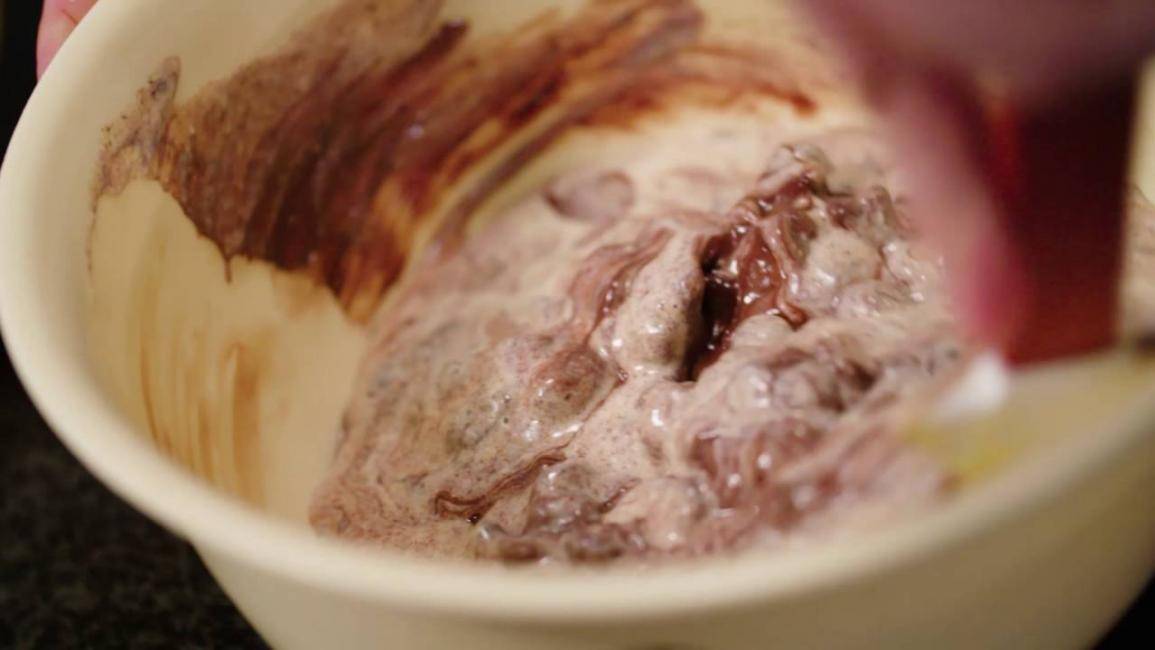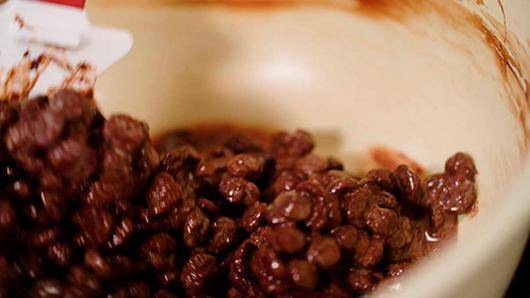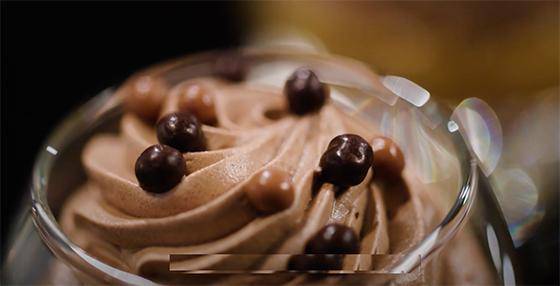Chocolate mousse - crème anglaise
How to make chocolate mousse based on crème anglaise
A different technique, but the same perfect results - although a Belgian chocolate mousse based on crème anglaise tends to have a slightly creamier texture.
GOOD TO KNOW
What should you take to heart when making chocolate mousse?
Always choose chocolate with a basic three-drop fluidity. This is essential to obtain a chocolate mousse with the perfect texture.
Always use cream with a maximum fat content of 35%. More fat would make the mousse too fatty and dense.
Always whip the cream into medium peaks (i.e. 2/3 stiff) and not more. If it’s too stiff, you can’t fold it in easily and it would spoil the texture of the mousse.
Follow the temperatures as stated in the recipes. They are crucial to obtain a well-structured, homogeneous end result.
Apply the chocolate mousse immediately: pour it into a piping bag and pipe it into your pastry rings before the mousse starts to set.
Use a piping bag with a big piping hole: if the hole is too small, it will spoil the aerated texture of your chocolate mousse.
Cooling your chocolate mousse in a refrigerator for about 2 to 3 hours will give it the perfect texture to make quenelles.
Needed:
- 425 g unsweetened medium-whipped cream
- 55 g cream (35%)
- 55 g whole milk
- 70 g sugar
- 50 g egg yolks
- 250 g Callebaut dark chocolate Single Origin Sao Thomé
- A stick blender
- A hotplate
- A saucepan
- A thermometer
- A spatula
Step 1
Whisk together the sugar and the egg yolks.
Step 2
Boil together the milk and the cream slowly.
Step 3
Pour half of the boiling mixture onto the egg mixture and whisk the whole together. Pour that mixture back into the saucepan, which still has half of the boiling cream mixture in it.
Step 4
Heat the mixture in the saucepan back up again while stirring until its temperature is at 82 to 85°C.
Step 5
Perform the spoon test to check if your crème anglaise is ready: dip a spoon or spatula into the crème anglaise, take it out and run your finger across the surface. If the mixture doesn’t run onto the clear line you just drew, the crème anglaise is absolutely perfect and ready for the next step.
Step 6
Pour the crème anglaise bit by bit onto the chocolate and mix the whole together into a homogeneous mixture.
Step 7
Emulsify the mixture with a stick blender to remove all lumps. Keep the blade below the surface of the mixture at all times to avoid creating air bubbles.
Step 8
Check the temperature of the mixture: it should range between 35 and 40°C to be ready for processing. Do mind that this depends on the chocolate you’re using and the amount of chocolate mousse you’re making.
Step 9
Gently fold in the unsweetened medium-whipped cream.
Step 10
Pour the chocolate mousse into a piping bag and pipe it immediately into your cake rings or dessert glasses.




